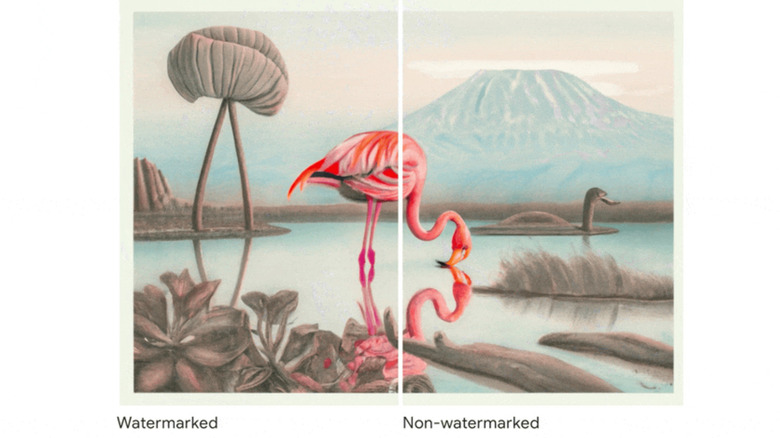Google's New AI Watermark Is So Good, You Can't Even See It
It's becoming harder and harder to escape AI-generated images on the web, as anyone with an internet connection can access some of the best AI Image Generators. Because of this and the continual evolution of AI technology, it is becoming increasingly difficult to distinguish authentic images from fake AI-generated ones. Google, however, thinks it has a solution to this with its SynthID.
This new tool from Google's AI development company Deepmind, in partnership with Google Cloud, adds digital watermarks to images that are undetectable to the human eye. Users can also upload pictures to Imagen to see if the text-to-image software created the image to check its authenticity.
SynthID has the potential to solve one of the biggest problems with traditional watermarks. Anyone with basic editing skills can remove watermark logos or crop them out to trick people into thinking they created the image or that it isn't AI-generated. But if the watermark is invisible, there is seemingly no way to remove it. When an image is uploaded to SynthID, users get an identification confidence level of the image in return as either "likely generated by Imagen," "unlikely to be generated by Imagen," or "could be generated." So, is this finally a solution to the AI-generated image confusion?
It's a good start
This is not a 100% foolproof solution to identifying AI-generated content because the tool only works if the image being scanned was made in Imagen. Additionally, whoever prompted the generation has to opt into adding the watermark. So, it means AI content produced in the popular DALL-E image generator from OpenAI, for example, won't be identifiable with SynthID.
Still, for identifying Imagen content, the tool seems pretty robust. Google notes that the two deep learning models SynthID uses can identify one of these watermarks even if a filter altered the image, its colors were adjusted, or it was compressed. Deepmind noted that the tool isn't 100% accurate, but its internal testing yielded favorable results. The company stated that this tool, currently in beta, may evolve to identify audio, text, and video content sometime down the line.
SynthID is just another example of Google fully embracing AI after it brought its co-founder in to work closely on the advancements. If it's as powerful as the tech giant claims, this tool is an important next step in combating misinformation online. With the outlines laid out by the White House about the safe development of AI, it wouldn't be a surprise if other AI companies adopted a similar tool.

